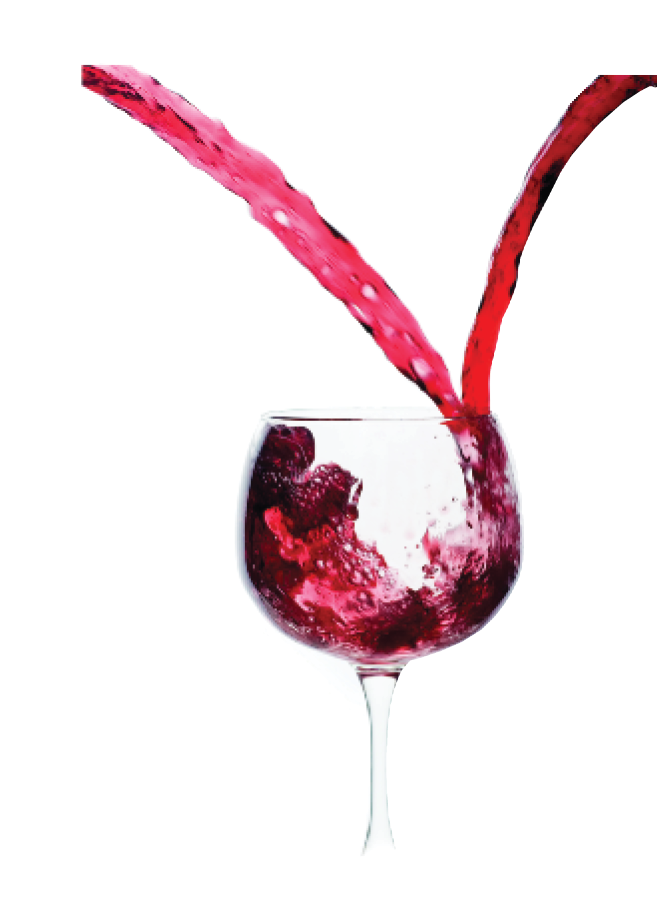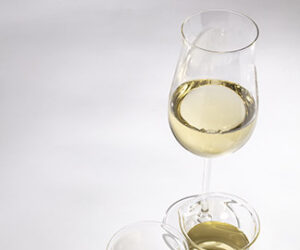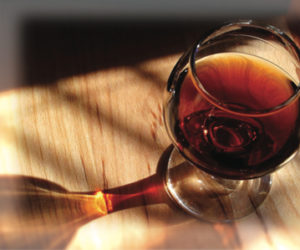 On the surface there doesn’t seem to be much to blending wines. Blending, in itself, is a physically simple task. You take one wine and stir it with another, and the result is a wine that tastes a little like both. In reality, blending is a deceptive business that is more than simply stirring wines.
On the surface there doesn’t seem to be much to blending wines. Blending, in itself, is a physically simple task. You take one wine and stir it with another, and the result is a wine that tastes a little like both. In reality, blending is a deceptive business that is more than simply stirring wines.
First-time blenders can improve their chances of success by arming themselves with a basic understanding of what concepts are really involved.
From a commercial standpoint the primary function of blending is to help the winery keep a consistent product from bottle to bottle. Blending among the various storage vessels of a particular vintage cancels out any variation created that year from a number of factors, such as differences in vineyards, fermentation containers, and tannin levels in barrels.
The second most common reason wineries blend is to keep their non-varietals consistent from one year to the next. This is a little more involved than blending across a particular vintage. Maintaining consistency within the same vintage requires a limited amount of skill and is almost routine in nature. Keeping non-varitals consistent from year to year requires an ability to taste and blend in an attempt to recreate what was made the year before.
For the home winemaker, the goal is a little different. For an amateur blending for the same reasons as the professional does has little value. Home winemakers blend to improve their wines, a third and less common reason wineries blend. Combining two or more wines makes each one better than they would be on their own. In effect the goal is to make one plus one equal at least three.
This is a more masterful side to blending that not only requires an understanding of its mechanics but also requires a palate with some finesse and an ability to envision a flavorful outcome. But the mechanics come first.
The Mechanics
There is a small part to blending wines that is quantifiable and non-subjective. For example if you have a wine with a titrated acid level of 1.1 percent and blend it with a wine that reads 0.55 percent, then the laws of science will easily tell you that upon blending the two wines the resulting creation will have a tartaric percentage somewhere between the two contributing wines. And to go a step further, if you know the proportion used of each wine in the blending, the math will predict exactly what acid level will result.
The same prediction can be applied to any measurable feature of a wine such as residual sugar, color, alcohol, and volatile acid. This does not tell you how the finished blend is going to taste, but it does allow you to maintain control of the measurable features. Knowing the measurable features is the starting point for any blending challenge. By knowing as many measurable features as possible, you can then begin to determine some blending parameters. This will help you to focus on the blends that are possible realities.
The Pearson Square is a visual math tool that can help even the most inept at math determine blending ratios of two wines to achieve a quantifiable outcome.
For example one wine has an acid level of 0.55 percent, and the other has 1.1 percent. You can use the Pearson Square to determine the ratio needed to obtain any desired acidity level between the two. In this example, shoot for an acid level of 0.7 percent.
The top left corner and the bottom left corner represent the acid level of the two wines to be blended. The center number is the desired acid level. The two numbers on the right are numbers that you calculate. The 0.15 is simply the difference between 0.55 and 0.7; likewise the 0.40 is the difference between 1.10 and 0.70.
The 0.15 and the 0.40 now represent the blending ratio of the wines that would result in the desired acid level: 15 parts of 0.55 percent wine and 40 parts of 1.10 percent wine. In this case the answers can be reduced to its lowest common denominator by five. So the ratio becomes three parts and eight parts respectively.
The point here is take measurements and follow through with calculations. Consider it a starting point before ever allowing any two wines to meet. Use what little science blending has to offer. It will be the foundation upon which your palate’s learned blending abilities will have to build.
The Breakable Rule
On the whole, blending to improve wines is more like an art than a science. Like any art there are some basic rules that are allowed to be broken.
The following breakable rules are listed in order from the least breakable to the most breakable:
- Blend wines that are fundamentally sound. Don’t treat blending as a cure-all. The wines most suitable for blending are the ones with considerable quality but might have a single correctable defect. Wines that create a whole wish-list are seldom candidates for successful blending.
- Have a specific goal. Don’t just blend because you want to make a wine better. For example know that you are blending to adjust a particular fundamental feature of a wine such as acidity, color, and residual sugar. Also know what desired measurement you want. Or from a more subjective point, know that you are blending to alter a nuance of a wine such as its berry undertones. Or maybe your goal is producing a commercial wine.
- Do test blendings with small amounts before blending in bulk. If possible have someone help you. Have someone mix a few combinations of two wines. Then you and others can do a blind tasting. Let your favorite blending choice be the guide to fine tune the next set of blendings to be blindly tasted, and do the same with the rest. Once you feel you have produced the ultimate combination, you might even consider bringing a third wine into the picture.This can obviously go on to an endless number of rounds and with an endless number of wines, which brings up two drastically important points. As an amateur blender if you don’t get anything else out of this article get this: As hard as it might seem sometimes, try not to swallow your sips; spit. The second point is observe rule number four.
- When you feel you’ve reached a blending decision, wait at least a day before taking action. This will give your palate a chance to unwind and re-taste the blending from a fresh and sometimes more sober standpoint. Blending is not something to be rushed, but something to be done with solid footsteps and a reasonable amount of certainty. Take a step back and reconsider all the characteristics of the chosen blend in a more holistic fashion. Forget about analyzing it. What is your overall impression after a fresh, first sip or two?
- Fine or filter wines after blending, not before blending. If you filter your wines it is best to wait a few days after blending. Every so often reactions between two or more wines can cause various precipitations to occur. This is for the most part an unpredictable phenomenon and should be just thought of as something that rarely happens and is easily solvable though filtration and/or finings.
- Blend wines that are from the same year. Blending wines from different years, in general, does not work as well. Wines blended from different years seem to have more instances of precipitation. These types of blends also seem to pull the older vintage back to a youthful harshness even though it might have been almost at its ultimate age for consumption.
- Blend wines that are similar in character. It is much safer and easier to blend wines of similar or like type than it is to blend wines that are dissimilar. For example, blend heavy reds with heavy reds, just as Cabernet is often blended with Merlot. Or blend a little peach wine with some Reisling. But attempting to blend a Merlot with a Riesling, while possible through luck, is not likely to increase the quality of your cellar stock.
Blending by Design
Understanding the mechanics and the rules of blending gives the novice blender a much needed path to follow. The blender should observe the breakable rules and use them as a guideline. The blender should take measurements of the wines to be blended to know what cards are being dealt. But the fact can’t be ignored that all these rules and measurements are only secondary to the real issue of how the wine tastes.
To become the best at blending, you must learn how to identify a particular wine’s strengths before you can continue to improve that wine. What makes the wine stand out among the rest? What gives it distinction? Is it the wine’s unusually light, crisp fruitiness? Or is it the rich, deep berry assertiveness? Or is it the unique way the wine starts on the tongue with its deep berry flavors and ends up cleanly with a light, crisp fruity aftertaste?
Understanding a wine’s weaknesses is just as important but usually easier to identify. Quite often it is an awkward aftertaste or a lack of roundness in flavor, making the drinking experience one dimensional and uneventful. It could also be a measurable feature such as acidity or color. Only then can you select secondary wines to blend with it that have complementing characters.
A complementing wine means a secondary wine that not only enhances the anchoring features of a primary wine, but also dilutes the weaknesses of that wine. In other words the two wines must fit together, filling in each other’s voids as well as building on their strengths. Blending that falls short of this goal is usually a futile event that just ends up trading one mediocre wine for another at best.
Without question there is significant talent in the ability to identify a primary wine stock’s distinctive qualities, but there is even more talent in the ability to recognize other wines that have fitting characteristics that can augment that wine. So often blending can unsuspectingly reduce the desired features of a wine to a gray, uneventful nothing.
Don’t feel that blending is only for the professionals or the few amateurs who aspire to become professional. Blending is a valuable tool that anyone with cellar stock should learn to use.
Start by observing the wines you drink whether commercial or homemade. Try to dissect each of the wine’s characters. If you have time, run to the cellar and see if you can’t pick out another bottle of wine that you feel would blend well with it. Not only is this approach helpful in becoming a proficient blender but also a fun and interesting way to appreciate wine.






